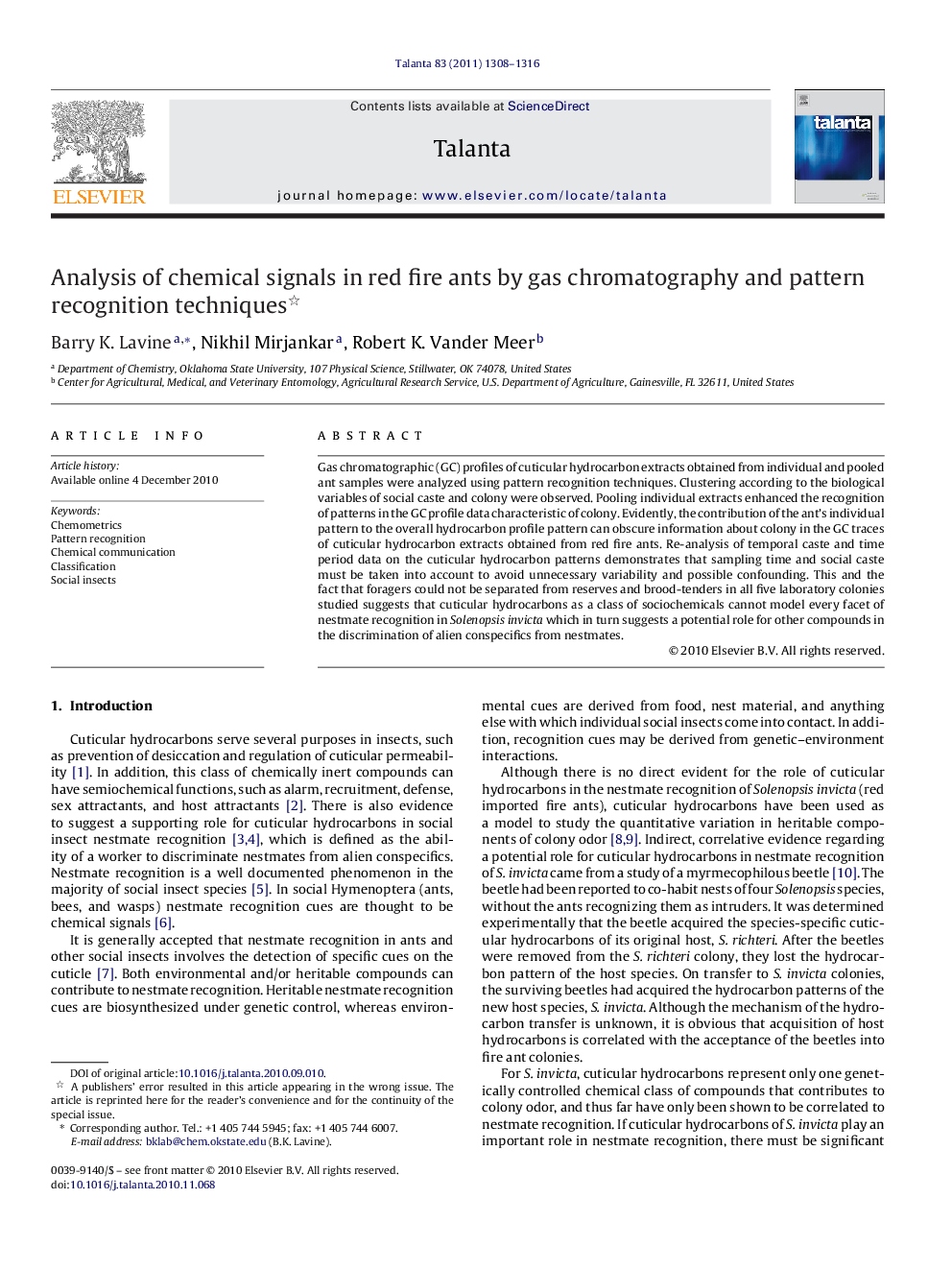| Article ID | Journal | Published Year | Pages | File Type |
|---|---|---|---|---|
| 10560703 | Talanta | 2011 | 9 Pages |
Abstract
Gas chromatographic (GC) profiles of cuticular hydrocarbon extracts obtained from individual and pooled ant samples were analyzed using pattern recognition techniques. Clustering according to the biological variables of social caste and colony were observed. Pooling individual extracts enhanced the recognition of patterns in the GC profile data characteristic of colony. Evidently, the contribution of the ant's individual pattern to the overall hydrocarbon profile pattern can obscure information about colony in the GC traces of cuticular hydrocarbon extracts obtained from red fire ants. Re-analysis of temporal caste and time period data on the cuticular hydrocarbon patterns demonstrates that sampling time and social caste must be taken into account to avoid unnecessary variability and possible confounding. This and the fact that foragers could not be separated from reserves and brood-tenders in all five laboratory colonies studied suggests that cuticular hydrocarbons as a class of sociochemicals cannot model every facet of nestmate recognition in Solenopsis invicta which in turn suggests a potential role for other compounds in the discrimination of alien conspecifics from nestmates.
Related Topics
Physical Sciences and Engineering
Chemistry
Analytical Chemistry
Authors
Barry K. Lavine, Nikhil Mirjankar, Robert K. Vander Meer,
